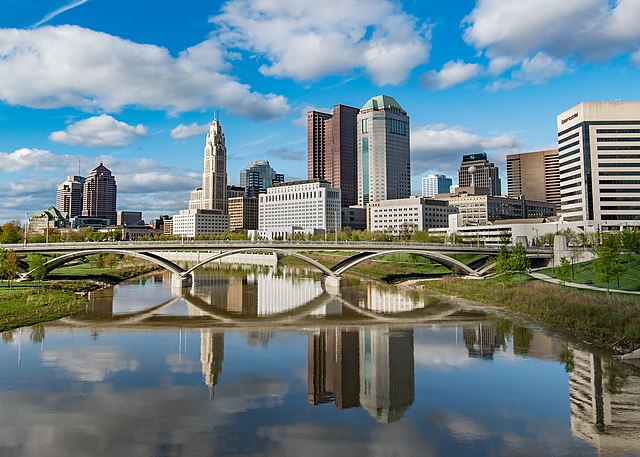The Short North is a neighborhood in Columbus, Ohio, United States, centered on the main strip of High Street immediately north of the Arena District and extending until just south of the University District and Ohio State University. It is an easy walk from the convention center or Nationwide Arena district to the south, Spanning the length of High Street from the north side of Goodale Street to the south side of 7th/King Avenue. It is flanked by Victorian Village to the west and Italian Village to the East. The Short North is a densely-populated commercial and residential district, with especially high pedestrian use during its monthly "Gallery Hop" and other local and downtown events.
The Short North
The Short North in 1980
High Street
The iconic arches of the Short North
Columbus is the capital and most populous city of the U.S. state of Ohio. With a 2020 census population of 905,748, it is the 14th-most populous city in the U.S., the second-most populous city in the Midwest after Chicago, and the third-most populous U.S. state capital after Phoenix, Arizona and Austin, Texas. Columbus is the seat of government of Franklin County; it also extends into Delaware and Fairfield counties. It is the core city of the Columbus metropolitan area, which encompasses ten counties in central Ohio. It had a population of 2,138,926 in 2020, making it the largest metropolitan area entirely in Ohio and 32nd-largest metro area in the U.S.
Image: Columbus from Main St. Bridge crop
Image: Mc Ferson Commons 01
Image: Ohio Statehouse 13 infobox crop
Image: Columbus, Ohio JJ 77b








